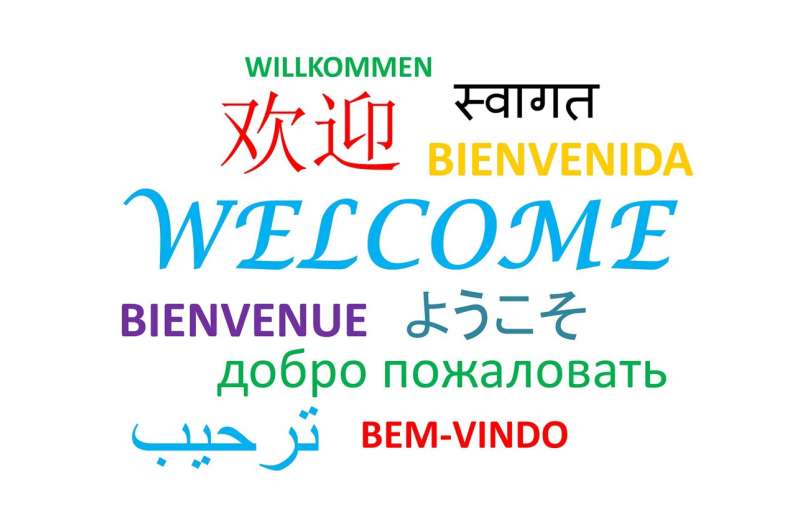This article has been reviewed according to Science X's editorial process and policies. Editors have highlighted the following attributes while ensuring the content's credibility:
fact-checked
trusted source
written by researcher(s)
proofread
Learning a language? Four ways to smash through the dreaded 'intermediate plateau'

How can I improve my English? This was a question frequently posed by my students in South Korea. My initial advice was straightforward—dedicate time and effort.
However, both my students and I found this advice unsatisfying and overly simplistic. As a fellow language learner who had reached only an intermediate level of Korean after years in the country, I empathized with their frustration. What could propel the linguistic skills of my South Korean students and I forward?
For language learners dedicating hours each week to mastering a second language, the journey often feels interminable, as if they're making no progress. The advice to "keep calm and carry on" hardly seemed adequate.
The breakthrough came after I left Korea, a revelation that arrived too late for my students there but not for countless others. I learned about language scholar Paul Nation's own teaching methodology. He suggests a balanced approach to language learning and it transformed my entire perspective. He proposes that language education should be evenly divided among four critical strands:
1. Meaning-focused input
This involves being exposed to the language through listening and reading. It's not just about understanding the gist of what is said or written but engaging deeply with the content. Watching movies, listening to music, or reading books in the target language can improve comprehension skills.
2. Meaning-focused output
Speaking and writing in the language are just as important. This encourages learners to produce language, thereby helping to cement knowledge and build confidence.
Language learners should seek opportunities to converse with other users of the language being learned, and not necessarily "native" speakers either. Writing emails or even starting a blog in the target language can also help.
3. Language-focused learning
This includes more traditional study methods such as grammar exercises, vocabulary flashcards and pronunciation practice. While these activities have developed an unfortunate, and perhaps unfair, reputation for being tedious, these tasks are essential for building a strong foundation in any language.
It needn't be dry and boring either—you can make a game of it. One of the motivational benefits of language-focused learning is how clearly improvement can be seen. Yesterday, you may only have known 47% of vocabulary items, but today you scored 72%.
It can be harder to detect incremental improvements in listening or speaking, for example. But this particular strand is an opportunity to show yourself how much you've learned. Language games and apps for drilling vocabulary and grammar can be fun and fulfilling while providing a sense of accomplishment at the same time.
4. Fluency practice
Finally, fluency practice challenges learners to use the language smoothly and quickly, without having to pause for thought. This could involve timed sessions of conversation practice, speed-reading exercises, or impromptu speech drills.
Notice that this isn't just about speech. Why is reading or writing fluently important? If reading and writing are slow, tedious processes, will we as learners want to do them very often? Probably not, so learning to use language with ease facilitates yet more language learning.
By integrating these four strands equally into your study routine, even outside of the classroom, the path to language mastery becomes clearer and more structured. If you're feeling stuck in your language journey, examine the habits you're using to learn.
Are you primarily using flashcards for vocabulary and grammar? These activities are useful, but they should only comprise about 25% of your total learning time. Are you primarily watching films? Again, consider how you might balance that meaning-focused input (if that's how you're using them) with learning activities in the other three strands.
Not every study session needs to comprise these four strands. But your overall study habits should include more or less equal time in each one.
And about my own Korean ability, once I started teaching my applied linguistics undergraduates in the UK about Paul Nation's four strands, I became aware of the fact that most of my own Korean learning was in the language-focused learning strand.
So, I put down my flashcards and started reading Korean novels and watching Korean films. Despite no longer living in Korea, where I had enjoyed the advantage of being surrounded by the language, my language skills increased sharply while living in the UK. This surprised my Korean friends and I when I returned there for visits.
For those like me who are feeling stagnant in their language learning journey, re-balancing your approach may just be the key to breaking through the plateau.
Provided by The Conversation
This article is republished from The Conversation under a Creative Commons license. Read the original article.![]()





















